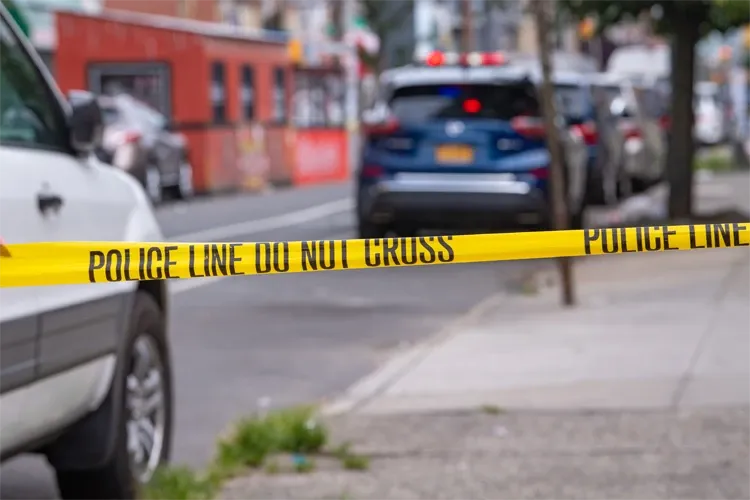Read any piece in the mainstream media about mass shootings, and you will hear a familiar story.
It will be a tale of gun ownership stats and mental health maladies. There will be references to assault weapons and personal stressors. Occasionally, there will be murmurs of an epidemic of white supremacy that allegedly pervades the nation. Unfailingly, the explanations will align perfectly into the progressive narrative that one can always trust legacy media to provide.
These mass shooting think pieces have become so trite and predictable that OpenAi’s ChatGPT parroted the same talking points when I asked it to write an article about why mass shootings have increased.
Of course, these points are not entirely meritless. No reasonable person denies that mass shooters somehow obtain firearms, nor that there is usually something off-kilter within the minds of people who commit such heinous acts.
The efforts by the media and academia to paint our society as one constantly ravaged by racist white men armed with semi-automatic rifles proceed directly from political opinions and preferences.
However, these explanations leave much to be desired. Why have mass shootings increased in the last 25 years or so? Gun ownership has been a feature of American culture for far longer. Guns have not suddenly become deadlier in function, nor suddenly easier to obtain. If mental health plays a role, then what sort of mental health pathology has swept the US in the last quarter century, and why?
The leftist stranglehold on public discourse has left these questions unanswered. The efforts by the media and academia to paint our society as one constantly ravaged by racist white men armed with semi-automatic rifles proceed directly from political opinions and preferences. Their preferred explanations for mass shootings are designed to support gun control legislation, expand taxpayer-funded social services, and justify endless racial grievances. Due to this bias, they present a distorted picture of mass shootings.
Tricky methodology
Defining “mass shooting” is a complicated endeavor. Researchers disagree about how many gunshot victims constitute a mass shooting event, and whether this prerequisite number should include only the number of people killed, or also the number of people wounded.
There is also the matter of where and why the shooting occurred. Some researchers only count shootings carried out in highly public spaces and exclude events in which entire families were shot at home, as well as any events that could be attributed to armed robberies, gang wars, drive-by shootings, arguments that turned deadly, or love triangles gone awry.
Others include many more of these factors in their definition of “mass shooting,” yielding grossly inflated numbers.
For example, one mass shooting database claims that there were 612 deaths by mass shooting in 2020, while another claims there were only nine. It is not difficult to see how a researcher could exploit these shifting variables to torture the data until they confess a party line.
Dwarfed by other homicides
Mass shootings are a small part of a much bigger problem. As horrible as they are, they account for only a tiny fraction of the yearly homicides that occur in the US. In 2020, there were 24,576 homicides. Even using the larger estimate of mass shooting deaths that year – 611 – this would make mass shooting deaths 2.4% of all homicides.
Mass shootings are a small part of a much bigger problem.
America’s homicide rate is higher than that of any other high-income Western nation, and this rate is seven times higher than the combined average rate of those fellow Western countries. It is worth noting that this, in combination with other violent crime, is precisely what drives so-called “mass incarceration.”
White men not overrepresented
It is often claimed that mass shooters are mostly white men. However, the racial demographics of mass shooters, yet again, vary wildly depending upon the operating definition of “mass shooting.” Even so, under the strictest definition of “mass public shooting,” which excludes all other crime-related shootings and likely selects for the most white people, white men account for 52% of mass shooters. Considering that white men compose 60% of the male population, they are actually underrepresented as mass shooters.
When “mass shooting” is defined solely by a gunshot victim count of four or more, the perpetrator demographics reflect stats on homicide offenders more generally. In 2021, 75% of mass shooters under this definition were black, 12% were Latino, 12% were white, and 2% were Asian.
Family structure
There have been no systematic studies of the family backgrounds of mass shooters, but if one painstakingly plumbs their biographies, it becomes clear that hardly any were raised by married, biological parents. It is simply true that growing up in other types of households, particularly single-parent households, increases the likelihood that a person will commit crimes, especially if he grows up in a neighborhood full of other single-parent households. The US has the highest rate of single-parent households in the world, so it is not surprising that our crime stats reflect the consequences of that.
A wealth of social science and observation have shown that children raised without fathers tend to develop less impulse control and weaker emotional regulation skills, and this has detrimental effects across many measures of well-being. As Theodore Dalrymple notes in his book “Life at the Bottom,” children raised in single-parent households tend to receive inconsistent discipline and often fail to receive that discipline as reinforcement of any particular moral principle. This can lead to the formation of a nihilistic, might-makes-right worldview.
One of the most consistent consequences of father absence is poor mental health outcomes, which brings the discussion nearly full circle.
It is also true that one of the most consistent consequences of father absence is poor mental health outcomes, which brings the discussion nearly full circle.
Secularism
As with family structure, there have been no serious attempts to analyze the religious beliefs of mass shooters, but one can easily deduce from biographical information that they are not a churchgoing, Jesus-loving crowd.
A growing proportion of Americans are likewise secular. The number of Americans who say they have no religion jumped from 5% in 1972 to 29% in 2022. Americans who reported being members of a local religious congregation held steadily around 70% until the year 2000, when the figure began to decline. By 2020, less than half of Americans belonged to a church. It has been during this period of declining faith that mass shootings have increased in frequency.
It is no accident that a society with a sharp increase in bitter, lonely, nihilistic, deranged individuals sees a corresponding rise in mass murder.
As fashionable as it is to claim that poor mental health motivates evil acts, the reverse is more true: acting in an evil manner is bad for your mental health. This is something people knew by faith and reason for millenia, until Sigmund Freud and a few other God-rejecting intellectuals appeared on the scene at the turn of the 20th century to create the secularist dogma of morality-independent mental health that has become all too popular in the intervening years.
Firm faith, stable families, good friends, and meaningful work are the strongest predictors of happiness and sturdy mental health. Thus, it is no accident that a society with a sharp increase in bitter, lonely, nihilistic, deranged individuals sees a corresponding rise in mass murder.
Until journalists and scholars who lean to the left begin seriously considering the data points that might challenge their worldviews, they will continue to overlook some of the factors most relevant to violent crime and drone on with the usual cursory explanations.



